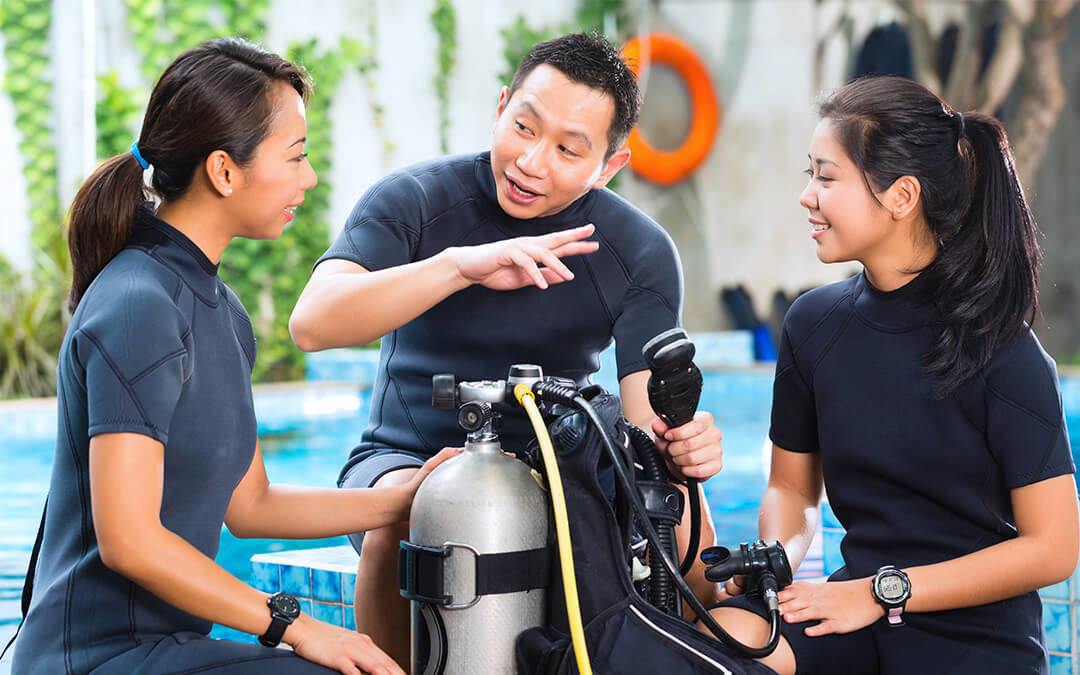Recently, we got an inquiry from a SCUBA diving search and rescue unit. They needed a source of medical oxygen for an emergency kit, used to treat SCUBA divers after certain types of accidents.
We were happy to help and thought it might be a good opportunity to share some of the benefits of having medical-grade emergency oxygen on-hand to treat SCUBA injuries.
Is SCUBA Diving Safe?
Statistically, yes. It’s quite safe.
According to a Diver’s Alert Network report from 2014, the fatality rate for SCUBA diving is about 2 per 100,000 participants. That makes SCUBA safer than jogging (13 per 100,000 participants), swimming (6 per 100,000 participants) and horseback riding (128 per 100,000 participants).
That doesn’t mean that accidents don’t happen, or diving injuries don’t occur.
In 2016, the Divers Alert Network reported 169 deaths and 3,577 diving-related injuries worldwide. After issues caused by ear and sinus pressure differences, decompression sickness is the next-most common diving-related injury. As you might have guessed, it’s one that can be treated on an emergency basis with medical-grade oxygen.
What Is Decompression Sickness?
Decompression sickness, sometimes referred to as “the bends,” typically occurs when a diver comes up too rapidly after too long of a dive. When this happens, the compressed air they’ve been breathing begins to expand in their bloodstream. As it expands, the bubbles that form can injure tissue or block blood vessels in organs, either directly or by triggering small clots.
Decompression sickness is separated into two types. Type I is mild, and its symptoms can include joint and back pain or fatigue. Type II is more severe. It can include numbness, or even paralysis, and lead to death in some situations.
Emergency Treatment with Oxygen
We’re not here to give medical advice, so we’ll let the pros from Harvard Health do it for us.
They say:
Emergency treatment for decompression sickness involves maintaining blood pressure and administering high-flow oxygen. Fluids also may be given. The person should be placed left side down and if possible the head of the bed tilted down.
The optimal treatment is the use of a hyperbaric oxygen chamber, which is a high-pressure chamber in which the patient receives 100% oxygen. This treatment reverses the pressure changes that allowed gas bubbles to form in the blood stream. The treatment drives nitrogen back into its liquid form so that it can be cleared more gradually from the body over a period of hours.
To put it another way, administering emergency oxygen is a good first step in treating decompression sickness.
It’s no wonder then that the Divers Alert Network (the same organization that tracks the diving fatalities and injury statistics we referenced above) offers a range of emergency oxygen kits designed to treat SCUBA diving injuries.
If you’re interested in learning to safely use those kits in an emergency situation, they also offer a training course.
Of course, even after an injured diver has received emergency oxygen in the field, they must seek medical treatment right away.
Again, to quote our friends from Harvard:
If you experience symptoms of decompression sickness after scuba diving or flying, get to a doctor as soon as you can. Hyperbaric treatment is most successful if given within several hours after symptoms start.
Need Oxygen? We Can Help.
As always, if you need medical-grade oxygen, either for an emergency SCUBA-injury treatment kit, or any of its other applications, we’re happy to help. Just get in touch.
